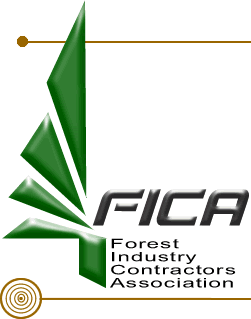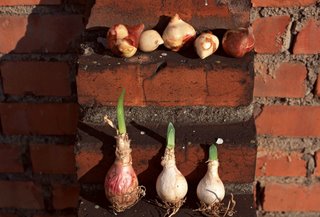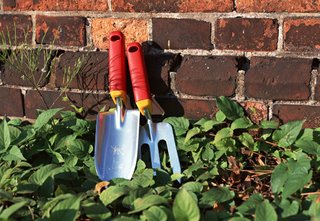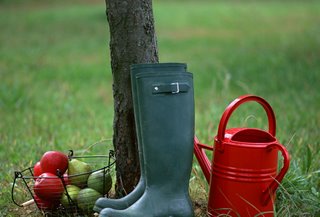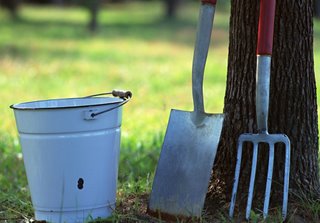
Weird to hear for us living and working in very crowded cities in Mediterranean area, but, for our Swedish friends from real countryside, the possibilities to get involved in car accidents due to moose crossing the motorways is really common. You hear these - sometimes dramatic - tales almost every year.
Last year I also had the occasion to see - quite closely - a moose crossing the road, driving north from Vaxjo with my finnish colleague Jan-Erik. It was dark and it was raining and he brake just 50 m from the moose, quietly strolling across the motorway, annoyed by our headlights. I understood the problem, I have to say.
The road signs - yellow triangles with the black moose in the middle - are very common along the roads crossing the forests.
I really like the moose. Get some infos!
Moose
Alces alces, called the moose in North America and the elk in Europe (see also elk for other animals called elk) is the largest member of the deer family Cervidae, distinguished from other members of Cervidae by the form of the palmate antlers of its males. The word "moose" is from mus or mooz in several of the Algonquian languages, spoken by certain indigenous peoples of the Americas. The name means "twig eater."
Habitat and range
Moose are typical of boreal and mixed deciduous forests of the Northern Hemisphere in temperate to subarctic climates. In North America, that includes almost all of Canada, Alaska, much of New England, and the upper Rockies. In Europe, most of Sweden, Norway, Finland and Russia have widespread moose populations. In Asia, moose are confined mainly to Russia. Moose were generally more broadly distributed in the past. Many of the European countries to which moose were once native now have extirpated or relic moose populations.
Moose have been successfully introduced on the island of Newfoundland in 1904 where they are now the dominant ungulate, and somewhat less successfully on Anticosti Island in the Gulf of St. Lawrence. Ten moose were also introduced in Fiordland, New Zealand in 1910, but they apparently died off. Nevertheless, there have been reported sightings and there is continuing speculation about their existence in New Zealand.
Antlers
The male moose's antlers arise as cylindrical beams projecting on each side at right angles to the middle line of the skull, which after a short distance divide in a fork-like manner. The lower prong of this fork may be either simple, or divided into two or three tines, with some flattening.
In the East Siberian race of the elk (Alces alces bedfordiae) the posterior division of the main fork divides into three tines, with no distinct flattening. In the common elk (Alces alces alces), on the other hand, this branch usually expands into a broad palmation, with one large tine at the base, and a number of smaller snags on the free border.
There is, however, a Scandinavian phase of the common elk in which the antlers are simpler, and recall those of the East Siberian race.
The palmation appears to be more marked in the North American race, the moose (Alces alces americanus) than in the typical Scandinavian elk. The largest of all is the Alaskan race (Alces alces gigas), which can stand over 2 m (6.5 ft) in height, with a span across the antlers of 1.8 m (6 ft).
The male moose will drop its antlers after mating season in order to conserve energy for the winter season. It will then regrow them in the spring. The antlers take about three months to grow, making them one of the fastest growing organisms in the world. The antlers initially have a layer of skin, which will shed off once fully grown.
Physical characteristics
The great length of the legs gives a decidedly ungainly appearance to the moose. The muzzle is long and fleshy, with only a very small triangular naked patch below the nostrils; and the males have a peculiar sac, known as the bell, hanging from the neck. From the shortness of their necks, moose are unable to graze, and their chief food consists of young shoots and leaves of willow and birch, tree bark and mast (the fallen nuts of forest trees) in winter, and waterplants (such as Arnicus brucitus). These ruminants are often found feeding in wetlands and swamps. Their teeth resemble those of other ruminants such as deer, cows, sheep and goats. On each side of the lower jaw they have three molars, three premolars and four front teeth, one of which is a transformed canine. In the upper jaw there are no front teeth, only a plate of horn against which the food is chewed. The usual stride of a moose is a shambling trot but, when pressed, they can break into a gallop and reach speeds of up to 55 km/h.
Male moose (bulls) can weigh over 550 kg, and females (cows) are sometimes more than 400 kg. Calves weigh around 15 kg at birth but quickly increase in size. Height at the shoulders can surpass 2 m. Only the males have antlers, often 160 cm across and 20 kg in weight with a broad, flattened palmate shape fringed in up to 30 tines. An Alaskan moose discovered in 1897 holds the record for being the largest known modern deer; it was a male standing 2.34 m at the shoulders and weighing 816 kg. Its antler spread was 199 cm.
Behavior and breeding
Although moose are generally timid, the males become very bold during the autumn breeding season; it is not uncommon for them to charge at moving trains. The females utter a loud call, similar to the lowing of cattle, which can be heard from up to 3.2 km away. During breeding (the rut), males will compete for females by fighting with their antlers and hoofs and by fierce clashing of antlers. As well as bellowing, the female moose emits a strong, odoriferous pheromone in order to attract a mate. She also secretes pheromones in her urine which lets the males know that she is in estrus. Females generally begin to breed at 2, but more usually 3, years of age.
The female gives birth to one or (occasionally) two calves at a time, in spring. The gestation period for a moose is about 216-240 days. Moose calves grow very quickly, nourished by their mother's milk, which is very high in fat and other nutrients.
In North America, during the winter, moose may form loose aggregations in fairly dense conifer forests, which they keep open by trampling the snow. In the spring, moose can often be seen in drainage ditches at the side of roads, taking advantage of road salt which has run off the road. These minerals replace electrolytes missing from their winter diet.
In North America, changes in land use patterns, mainly the clearing of northern forests for settlement and agriculture, have led to the range of the White-tailed deer expanding northward. Where their ranges overlap, moose may become infected by parasites carried by the deer such as brain worm, Parelaphostrongylus tenuis, and winter ticks, Dermacentor albipictus, which, though fairly harmless to deer, can be fatal to moose.
The lifespan of a moose in the wild is roughly 15 to 25 years.
History
European rock art and cave paintings reveal that the elk has been hunted since the stone age. In Northern Scandinavia one can still find remains of trapping pits used for hunting elk. These pits, which can measure up to 4 x 7 m in plan and be up to 2 m deep, would have been camouflaged with branches and leaves. The pit would have steep sides, lined with planks, making it impossible for the elk to escape once it had fallen in. Pits are normally found in large groups, crossing the elk's regular paths and stretching over several kilometres. Remains of wooden fences guiding animals toward the pits have been found in bogs and peats. In Norway, an early example of these trapping devices has been dated to around 3700 BC. Trapping elk in pits like these is an extremely effective hunting method, and as early as the 16th century the Norwegian government tried to restrict their use. Nevertheless, the method was in use until the 19th century.
The first written description of the elk is in Julius Cæsar's Commentarii de Bello Gallico, where it is described thus:
There are also animals which are called alces. The shape of these, and the varied color of their skins, is much like roes, but in size they surpass them a little and are destitute of horns, and have legs without joints and ligatures; nor do they lie down for the purpose of rest, nor, if they have been thrown down by any accident, can they raise or lift themselves up. Trees serve as beds to them; they lean themselves against them, and thus reclining only slightly, they take their rest; when the huntsmen have discovered from the footsteps of these animals whither they are accustomed to betake themselves, they either undermine all the trees at the roots, or cut into them so far that the upper part of the trees may appear to be left standing. When they have leant upon them, according to their habit, they knock down by their weight the unsupported trees, and fall down themselves along with them.
U.S. President Theodore Roosevelt was referring to the male moose's relentless behavior during breeding when he said "I am as strong as a bull moose" (some accounts say "fit as a bull moose"). Because of this, Roosevelt's Progressive Party became popularly known as the Bull Moose Party.
The moose in popular culture
In Western culture, the moose is often depicted as laconic and good-natured but not terribly bright. Bullwinkle of The Rocky and Bullwinkle Show, an animated television series, is the most famous example, although Rutt and Tuke (voiced by Rick Moranis and Dave Thomas in a return to their MacKenzie Brothers roles) from the Disney release Brother Bear are also excellent examples.
A moose for Jessica chronicles the 76-day 'relationship' between a wild bull moose and a Hereford cow named Jessica in Shrewsbury, Vermont, USA.
In Monty Python and the Holy Grail, the opening credits are given mock-Norwegian subtitles that quickly degenerate into vandalism, including such lines as "A møøse once bit my sister" and "Mind you, møøse bites kan be pretty nastï".
In poker, a loose or inexperienced player is often referred to as a "moose" (or occasionally a "Vunk").
The quest to see (and possibly catch) moose or 'meese'* is a recurring theme in The Tent Dwellers, by Albert Bigelow Paine.
not the real plural for 'moose'. However, the term 'meese' has been used often as a joke due to the fact that the plural of goose is 'geese'.
The moose is the symbol of collegiate clothier Abercrombie & Fitch.
Vehicle collisions and moose warning signs
A moose's body structure, with a large heavy body suspended on long spindly legs, makes these animals particularly dangerous when hit by motor vehicles. Such collisions are often fatal for both the moose and motorist. This has led to the development of a vehicle test in Scandinavia referred to as the "elk test" (Älgtest). Generally, upon impact the bumper of the car will break the elk's legs. The main body of the elk will then collide with the windshield, often with disastrous effect to both motorist and animal. In a collision of this nature a car's airbags may not deploy or be of much use if they do[1].
Moose are reported to kill more people in Canada than any other animal except, perhaps, for bees (far exceeding the toll of, for example, the grizzly bear)[citation needed]. Females can be extremely protective of their young, and extreme caution should be exercised when approaching a cow moose. The overwhelming majority of human fatalities attributable to moose occur in motor vehicle collisions with moose.
Moose or elk warning signs are used on roads in regions where there is a danger of collision with the animal. The triangular warning signs common in Sweden and Norway have become coveted souvenirs among the many German tourists traveling in these countries, and authorities have had to issue warnings that it is a dangerous and criminal practice to remove one of these signs. The popularity of these signs has led to them being depicted on all kinds of souvenirs, such as coffee mugs, neckties or T-shirts, and full-size copies of the actual signs may be bought. In the mid 1990s, the Swedish postal service issued a triangular stamp with an elk warning sign, intended to cater especially to German tourists writing postcards home. The brand Ahlgrens bilar ("Ahlgren's Cars"), a popular confectionery product which has been on the market since 1953, has in recent years been extended to other car- and road-related products, one of which, depicting Swedish road signs, includes a candy elk warning sign.
Thanks, as usual to WIKI.
BR/zespri

